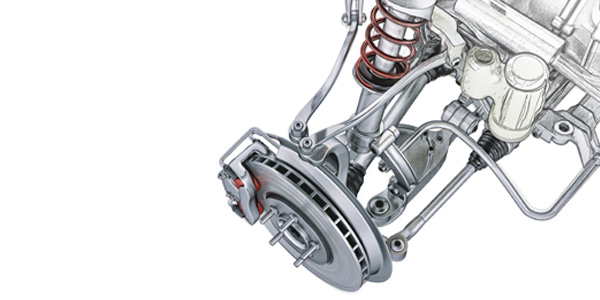
Everybody knows what shocks and struts do, right? They absorb shocks. These ride control components dampen spring oscillations as a vehicle’s suspension moves through jounce (compression) and rebound (extension). They do this by pumping hydraulic fluid through orifices and spring-loaded valves that offer a calibrated amount of resistance. As the piston pumps up and down inside a shock or strut, fluid is forced back and forth through the restrictions. The resistance created by this action generates heat and friction, so a shock will actually feel warm or hot to the touch after driving on a rough road.
Rapid pumping can churn the hydraulic fluid into foam. When this happens, the shock loses much of its dampening ability and begins to “fade.” This occurs because the bubbles in the foam offer less resistance to the piston. As fade increases, the suspension starts to feel loose and handling takes a dive.
In “gas” shocks, pressurized gas (usually nitrogen) is added to the shock when it is manufactured. The pressure exerted by the gas on the fluid reduces the formation of bubbles, which greatly improves the shock’s dampening ability under hard use. Most “double tube” shocks contain about 100 to 200 psi of gas, while “monotube” performance shocks carry 280 to 360 psi.
The ride characteristics and stiffness of a shock is determined by its valving. In some shocks and struts, small grooves in the piston bore create a “comfort zone” that reduces stiffness on smooth roads. But when piston travel extends beyond the grooved area, the piston encounters more resistance and stiffens the resistance to suspension motions for better control.
Some people think struts are just oversized shocks. They are, but they are also an integral part of the suspension rather than an add-on like shocks. On front-wheel drive cars with MacPherson struts, they also serve as the steering pivots for the front wheels, and eliminate the need for upper control arms and ball joints. A bearing plate on top of the strut allows the wheels to steer easily and supports the weight of the vehicle. A worn bearing plate can create suspension noise, and also may increase steering and/or cause poor steering return after turning. The plate can be replaced separately by rebuilding the strut (a job that also requires a spring compressor). Old bearing plates should NOT be reused if a pair of struts are being replaced.
MacPherson struts also have a spring around the outside of the strut body that supports the weight of the vehicle. Problems here include weak sagging springs and broken springs. Many springs have a thin plastic coating to protect the spring from rust. If the protective coating is nicked, moisture and road salt can concentrate rust weakening the spring and causing it to break. Weak or broken springs can be replaced by rebuilding the strut, but a better option is to simply replace the strut with a new pre-assembled ready-to-install strut. No spring compressor is required (although the wheels will have to be realigned after the struts have been installed).
Shocks and struts should be replaced if a shock or strut piston rod is bent or damaged, if the unit is broken or missing, has damaged or missing mounting hardware, is binding or is leaking oil. Replacement is also recommended if the original dampers are getting weak or are not providing adequate ride control. Original equipment shocks and struts also can be replaced with aftermarket performance dampers to upgrade handling performance. High-pressure monotube dampers are a popular choice, with adjustable dampers offering the flexibility to change how they feel.












